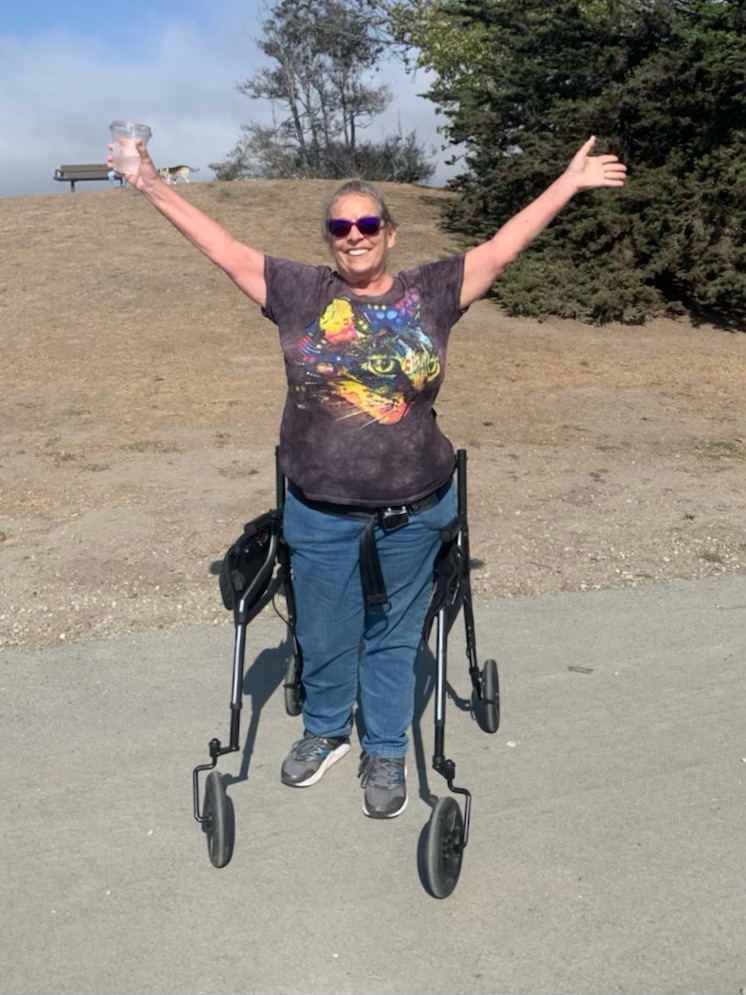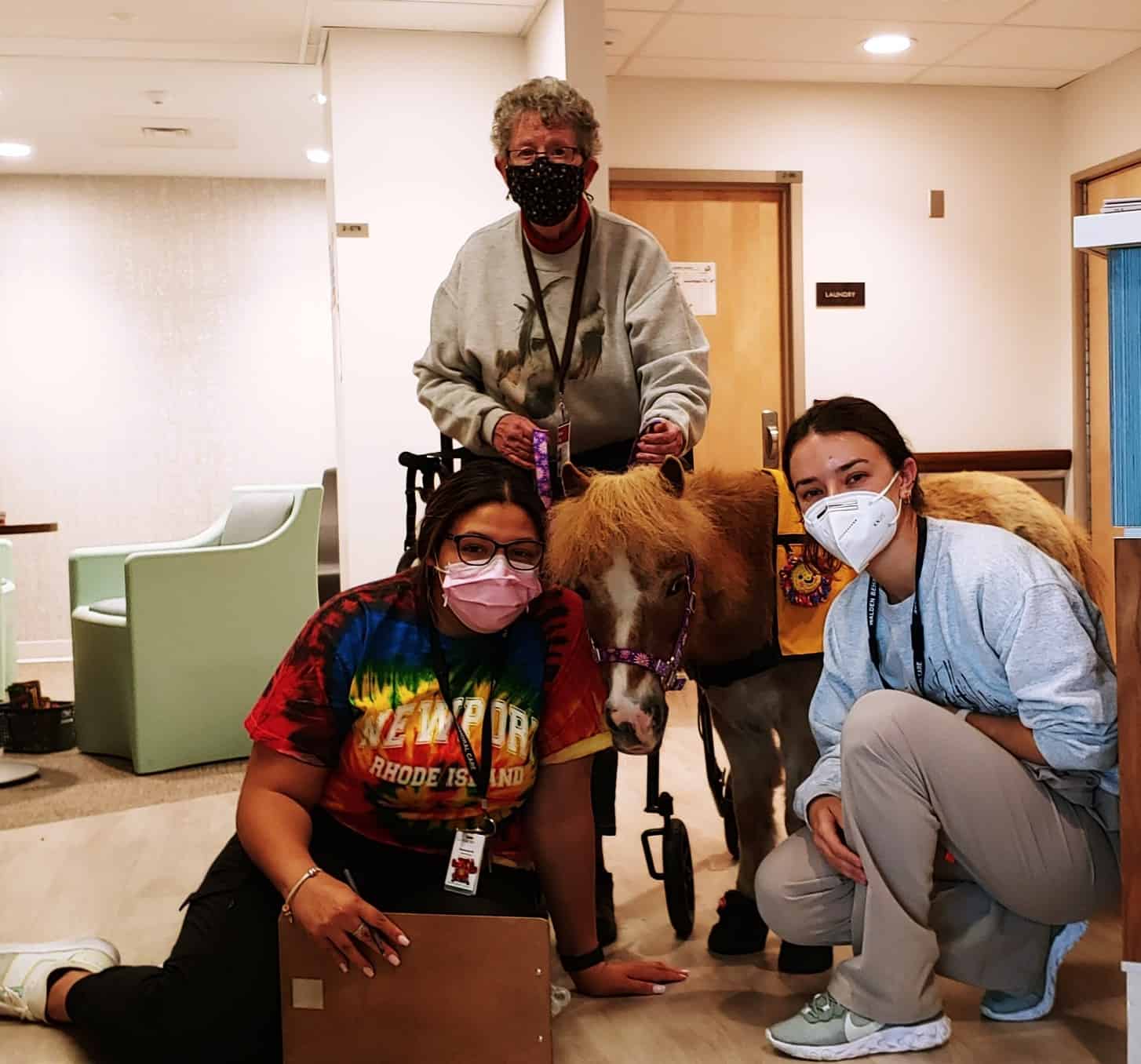Julie Groves has worked as an in-home therapist for over four decades. When she first saw a prototype of the fall-safe, hands-free LifeGlider, she immediately saw its potential to give her clients the confidence they need to balance, stand and walk. She has utilized it in her practice, Therapy in Your Home, ever since.
We recently spoke with Julie about her experiences using the LifeGlider to help clients, including people with Parkinson’s disease, and about why she believes this mobility aid can help many others.
What services do you offer through your practice?
Therapy in Your Home provides outpatient therapy in the home to anyone who wants it. With some home health services plans, you have to be homebound to be covered. Many people can leave the house but still want to have therapy in the home for a number of reasons, like practice getting in and out of their own bathtub or getting help in a familiar setting if they have dementia.
There’s a lot to occupational therapy that touches on both mental health and physical ability. We help people with their psychological response to a disability as we help them overcome it. With some degenerative diseases, we help them do well as they go through changes. We offer a wide variety of services for children to adults, orthopedic, psychiatric, all different needs.
What population of patients do you focus on?
My personal practice area is geriatrics, which of course includes both physical and mental health issues.
What did you think of the LifeGlider when you first heard about it?
I was introduced to it through a physician several years ago, early on when Rob (Karlovich, Inventor of the LifeGlider) was first developing prototypes. I thought, ‘What a concept!’ I was so excited.
How have you seen it help people?
One patient was an elderly man with Parkinson’s. When he came to the door to meet me, he was struggling to take steps, holding onto the furniture. Once we put him in the LifeGlider, he was striding, swinging his arms, standing up straight, smiling. It was amazing!
Another man had a very severe stroke and struggled to move at all. He couldn’t walk, but we could get him in the LifeGlider. It was hard, but he could put weight on both feet, he could be upright. It gave him the security he needed to stand and take steps.
I’ll tell you one more story. A woman with Parkinson’s could get to standing and could get into her walker, but she was always in retropulsion (loss of balance in a backward direction), always unstable, on her toes in that common Parkinson’s posture. We secured her in the LifeGlider and just focused on getting her to just stand for a minute, to let her shoulders relax, let her heels come down and just rock back and forth in that posture. That was calming and reassuring to her. The LifeGlider let her feel secure, let her body calm so that she could at least stand.
What does the LifeGlider help your patients do in their daily lives that they struggle to do without it?
I see it mostly as a tool to help people move outside the house — like to go for a walk at the mall or just walk. In the house, they can walk down the hallway, which is often more than they’ve been doing. It’s also useful for patients who struggle to operate in the kitchen. For one, the LifeGlider lets them take something from the refrigerator and carry it to the table using two hands. Also, somebody who wants to stand and cook can let go and use one hand to hold the pot while they stir with the other and still feel stable.
The reason I see it as a tool for these uses rather than general mobility is that for other in-home uses, like to get to the bathroom, or to just go across the room to get something or answer the phone, it is a little too much for some people to quickly strap in and unstrap. I would still recommend having other mobility aids on hand as well.
Who else do you think the LifeGlider could help outside of your geriatric patients?
If I worked with back injuries, I think it would be very useful for people with back pain. They would be able to walk with stability rather than tightening up and aggravating their back by leaning forward because they’re worried about falling. Certainly it would help stroke survivors to get that symmetrical weight-bearing. I would love to use it to work with a person with an amputation who doesn’t want to put on their prosthesis but still wants to be up and moving, stretching out their hamstrings.
How would you explain the unique benefits of the LifeGlider clinically?
The LifeGlider stabilizes the pelvis. The stability of the trunk affects the upper body and the lower body. It gives the patient confidence that they won’t fall, so that they can let their shoulders down, stand up straight, take symmetrical steps and get a little bit of rotation as they step forward. Clients can take a longer stride because they’re not worrying with every movement that they’re going to fall.
From a neurological point of view, the LifeGlider also helps retrain the brain. When clients walk upright, the brain is getting feedback directly from the hips and the pelvis, ankles and feet. That’s where it’s supposed to come from. In contrast, when you see a person walking with a walker, they’re not paying attention to how their feet are hitting the ground, or whether the foot is hitting the ground securely, or whether their knees are holding them up. They’re feeling their arms. If they get out of balance, they’re pushing one arm or the other, walking “on” their arms. What good does that do when you’re trying to get the client to feel their legs as training for walking?
What might surprise people about the LifeGlider that they should be prepared for?
It’s not really comfortable to sit on the seat. That’s probably the complaint I hear the most, but you’re not supposed to sit on the seat. It’s just there to stabilize you.
What do you want people considering the LifeGlider to know?
I believe in the LifeGlider. It fills a hole in what’s needed for people to be mobile. It provides that core stability for a variety of conditions, for Parkinson’s, for back injury, if you only have one leg because of an amputation. I haven’t used it for all these people, but I can picture how it would help some of them.
Julie is active in the LifeGlider Users Group on Facebook, an active community of LifeGlider owners, clinicians, and anyone interested in improving their lives through better mobility. Contact her directly through her website, or reach out to us with your questions as well. We’re eager to connect you with people and products that can help you live a more independent and fulfilling life!


